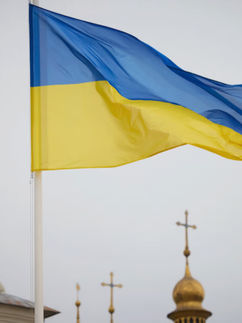A media cold war is being fought with drones and balloons
- Young Diplomats Society
- Mar 24, 2023
- 3 min read
Isabelle Zhu-Maguire

In unison with other western media outlets, the BBC covered the recent collision between a US drone and a Russian aircraft in a monolithic manner - the Russian pilot was reckless and a collision occurred.
However, this synchronized coverage of the drone’s downing makes it hard to discern what really happened and only ever cites the US military as being the only accurate source of information.
What is reckless is this sort of uniform, fear-mongering coverage. It is promoting a war-time mentality which is itself dangerous. For example, the aforementioned BBC article says:
“Western allies have worked hard to stop the war in Ukraine escalating into a direct confrontation with Russia. But this incident over the Black Sea is just that. The US will now have to evaluate its response.”
However, the BBC and others gave very little detail about the actual collision. The story they present is that this Russian pilot was ‘reckless’ and was allegedly dumping fuel on top of this 20m long US drone. Yet, there are limited details about how the collision occurred. In particular, there is no mention of who collided with who. They claimed the dumped fuel made the US drone ‘unflyable’. Is it therefore fathomable that the US air force may have lost control of the drone and therefore it collided with the Russian aircraft? It was days later that disjointed video footage was released “confirming it was a collision”.
Furthermore, what the BBC and others then neglect to mention is why there was a US drone over the Black Sea. Via context clues alone, it is clear that the drone was there for reconnaissance - for spying.
This should not come as a surprise given the rising tensions in the region and the cold war mentality the global superpowers have adopted. Even before the world entered this new ‘cold war’ era, global powers commonly spied on each other. In fact, it is commonplace for these ‘opposing’ global powers to even tell eachother what they are about to do. Russia’s invasion of Ukraine shows the world how costly war is and powers thus will do whatever it takes to avoid war with each other.
However, despite the reality that we are all spying on eachother, there is a clear difference in the coverage of this drone’s activities and the coverage of the Chinese balloon found flying over the US.
The “Chinese spy balloon” was internationally and extensively covered by western media outlets. There was endless speculation about the balloon's ability to “monitor US communications”, track radar transmissions or even monitor thermal heat signatures. It was suggested that this balloon was part of a platoon of balloons, spying on over 40 countries. Outlets like the Guardian sounded the war horns hailing this balloon as the beginning of a “new era of war”.
However, whatever China is potentially doing with its balloons, the US has been doing for decades. Take Pine Gap for instance. Pine Gap is a US-Australia joint military base right in the middle of Australia. The base controls United States spy satellites that are monitoring one-third of the globe - all day, every day. These particular satellites are incredibly powerful and are monitoring “radar transmissions [and] any kind of electronic transmissions, communications or otherwise” as well as thermal heat signatures. In fact, it is highly likely that Pine Gap is currently being used to spy on Russia.
What this downed US drone and the similarly downed Chinese balloon highlight is that all global powers are spying on one-another. But the differing coverage of these incidents clearly suggests that western media is heavily pushing a villains and heroes narrative- with Russia and China being the ‘big bads’ and the US being the great protector.
We have been provided our fair share of this type of war coverage in Australia recently with many of our major media outlets proclaiming that “Australia [is] facing threat of war with China within three years”. However, what is neglected in this coverage is that the think tank behind the five security ‘experts’ that created this story is funded by the Australian Defence Force, Lockheed Martin, and Boeing - all of whom benefit from this type of war-time rhetoric. A deeper look into the coverage of the so-called ‘imminent war’ shows that this story was littered with errors, hysterics and profit-seeking behavior.
Hence, this story of a downed US drone should not be viewed so simply. Instead, we should consume this type of media skeptically and always question when an outlet begins to beat the drums of war.
Isabelle Zhu-Maguire (she/her) is a Master of International Relations student at Monash University. She is a youth network coordinator at UN's Sustainable Development Solutions Network and the founder of the Sustainable Universities Network (SUN). Isabelle has conducted research into gender and climate change as experienced by Afghan women as well as intervention in the Pacific from a Gramscian perspective.

















Comments